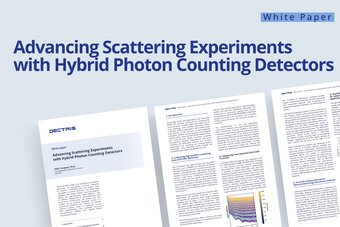Hybrid Photon Counting (HPC) applications in open access papers

Be it in our Book club or at home, DECTRologists are avid readers. For this year’s World Book and Copyright Day, we recommend several open access publications.
High-energy X-ray applications
1. Time- and spatially-resolved analysis of materials with various degrees of crystallinity is no longer a dream. Diffraction experiments can be successfully combined with computed tomography (XRD-CT) and used for in situ and operando monitoring of reactions in a fuel cell.
2. PDF experiments can now be performed on ultrathin (2-20 μm) metallic glasses, which only give a feeble diffraction signal at X-ray energy of 79.5 keV. By placing the PILATUS3 X CdTe 2M detector off center and close to the sample, Luo et al. accessed the resolution up to ~30 Å-1.
Ultrastable metallic glasses formed on cold substrates
3. More than 60% of determined protein structures, including almost all of the protein structures of the novel coronavirus, rely on the data collected with the HPC X-ray detectors. What is there to improve? Two recent papers show that a judicious choice of energy maximizes the amount of data obtained per unit damage.
Low-dose X-ray structure analysis of cytochrome c oxidase utilizing high-energy X-rays
Measuring energy-dependent photoelectron escape in microcrystals
PXRD in laboratory diffractometer
4. In the last two decades, laboratory PXRD has been upgraded from a simple fingerprinting technique to a powerful tool for materials scientists. Panda and co-authors use laboratory PXRD for following thermal expansions of an organometallic compound.
What does the future bring?
5. Electron diffraction overcomes the last limit to crystal structure determination: the size of a crystal. Grüne et al. present the structure determination of microcrystalline molecular compounds.
Rapid Structure Determination of Microcrystalline Molecular Compounds Using Electron Diffraction
6. Naydenova and co-workers from the MRC Laboratory of Molecular Biology demonstrate the promises of cryoEM at 100 keV.
CryoEM at 100 keV: a demonstration and prospects
There’s more to the Hybrid Photon Counting technology
7. The path from an idea to the reliable and useful products has been tremendously exciting. In this paper, Förster et al. describe the technology and highlight its benefits for synchrotron and laboratory X-ray techniques.
Transforming X-ray detection with hybrid photon counting detectors




